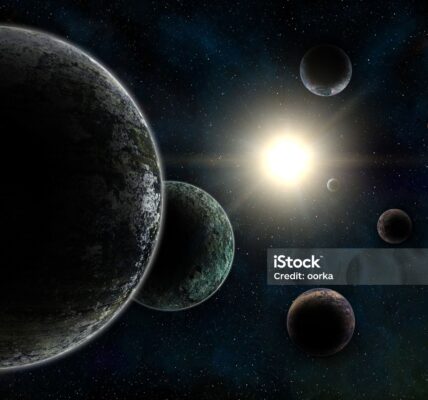Signs of Life on Venus: Could Our Neighbor Hold Alien Microbes?
Astronomers might have found signs of life on Venus! This blog explores the exciting discovery of phosphine and ammonia gas in the Venusian atmosphere, and what it could mean for the possibility of alien life on our neighboring planet.

© Getty Images
Signs of Life on Venus
Venus, our scorching hot neighbor, has long been considered a wasteland. With a surface temperature hot enough to melt lead, the idea of life existing there seemed like science fiction. However, recent discoveries have sent a jolt of excitement through the scientific community, hinting at the possibility of alien life lurking in the Venusian clouds.
This excitement stems from the detection of two key gases in Venus’ atmosphere: phosphine and ammonia. Here on Earth, both gases are often associated with biological processes.
The Significance of Phosphine
The presence of phosphine is particularly intriguing. On Earth, phosphine is primarily produced by living organisms, specifically microbes that live in oxygen-free environments. While non-biological processes can, in theory, create phosphine, they are much less common. This makes the discovery of phosphine in Venus’ atmosphere a significant finding, as it suggests the possibility of life existing somewhere on the planet.
Ammonia: Strengthening the Case
The detection of ammonia adds another layer of intrigue. Unlike phosphine, ammonia isn’t known to be readily produced through non-biological means on planets. Here on Earth, ammonia gas is associated with decaying organic matter and certain types of volcanic activity. However, Venus’ volcanic activity wouldn’t be expected to produce significant amounts of ammonia. This strengthens the case for a biological origin for the gas, potentially linked to some form of life in the Venusian clouds.
A Word of Caution: Confirmation Needed
While the discovery of these gases is exciting, it’s important to remain cautious. Scientists are quick to acknowledge the need for further investigation before definitively declaring the presence of life on Venus. There’s always the possibility that these gases could be produced by unknown geological or chemical processes on Venus that we haven’t yet fully understood.
The Venusian Cloud City: A Potential Habitat for Life?
If life does exist on Venus, the most likely location seems to be the high cloud layers. These regions have a more moderate temperature range compared to the scorching surface, which would be inhospitable to any known form of life. Additionally, the clouds contain water vapor, another key ingredient for life as we know it.
The Search Continues: Unveiling the Secrets of Venus
The discovery of phosphine and ammonia has opened a new chapter in the search for life beyond Earth. Scientists are eager to learn more about the composition of Venus’ atmosphere and explore the possibility of life existing in the Venusian clouds. Future missions could involve sending probes specifically designed to analyze the atmosphere and search for biosignatures, the chemical signatures left behind by living organisms.
Looking Ahead: Implications for the Search for Extraterrestrial Life
This discovery not only reignites our interest in Venus but also broadens the scope of our search for life in the universe. It suggests that life may be able to exist in harsher environments than we previously thought possible. This could lead us to re-evaluate the potential for life on other planets and moons within our solar system and beyond.
The Final Word: A Spark of Hope in the Venusian Atmosphere
The detection of phosphine and ammonia in Venus’ atmosphere is a fascinating development in the field of astrobiology. While confirmation is needed, it provides a compelling reason to continue exploring this mysterious planet. With further investigation, Venus may no longer be seen solely as a scorching wasteland, but as a potential harborer of life, even if it exists in a form far different from anything we’ve encountered on Earth.
ALSO READ:
“Rare Earth Hypothesis: 5 Astonishing Reasons Earth Is Unique”



